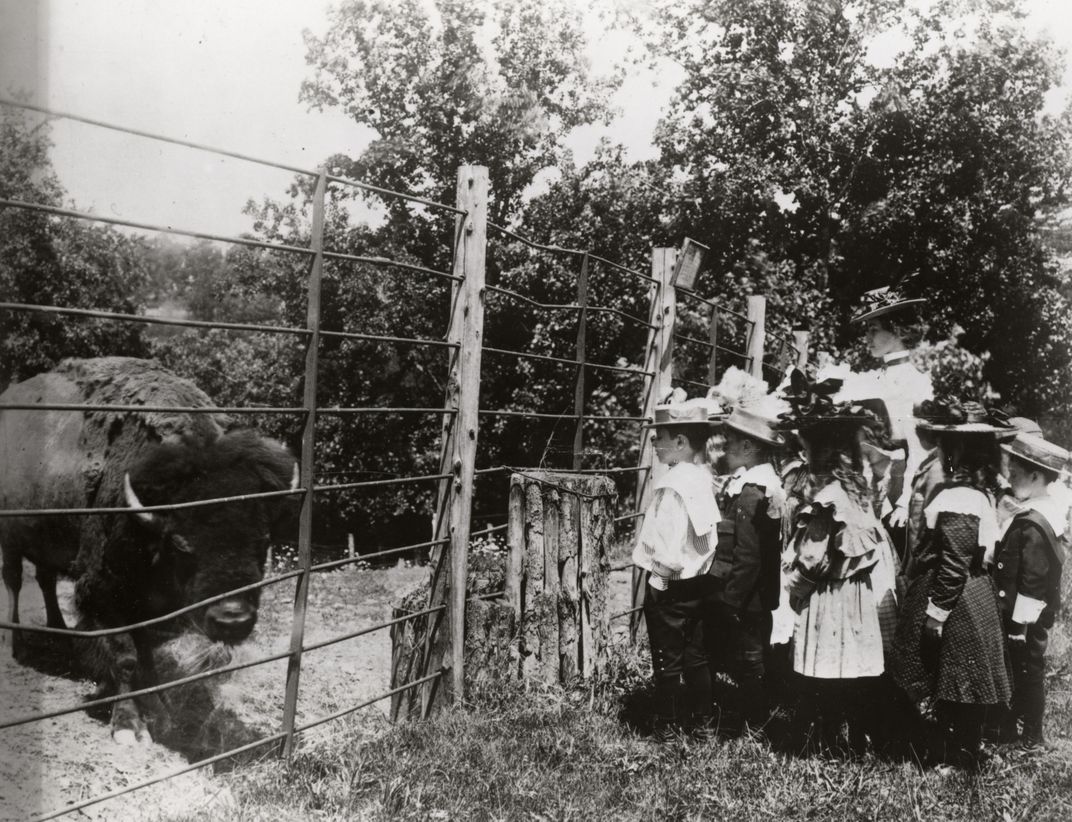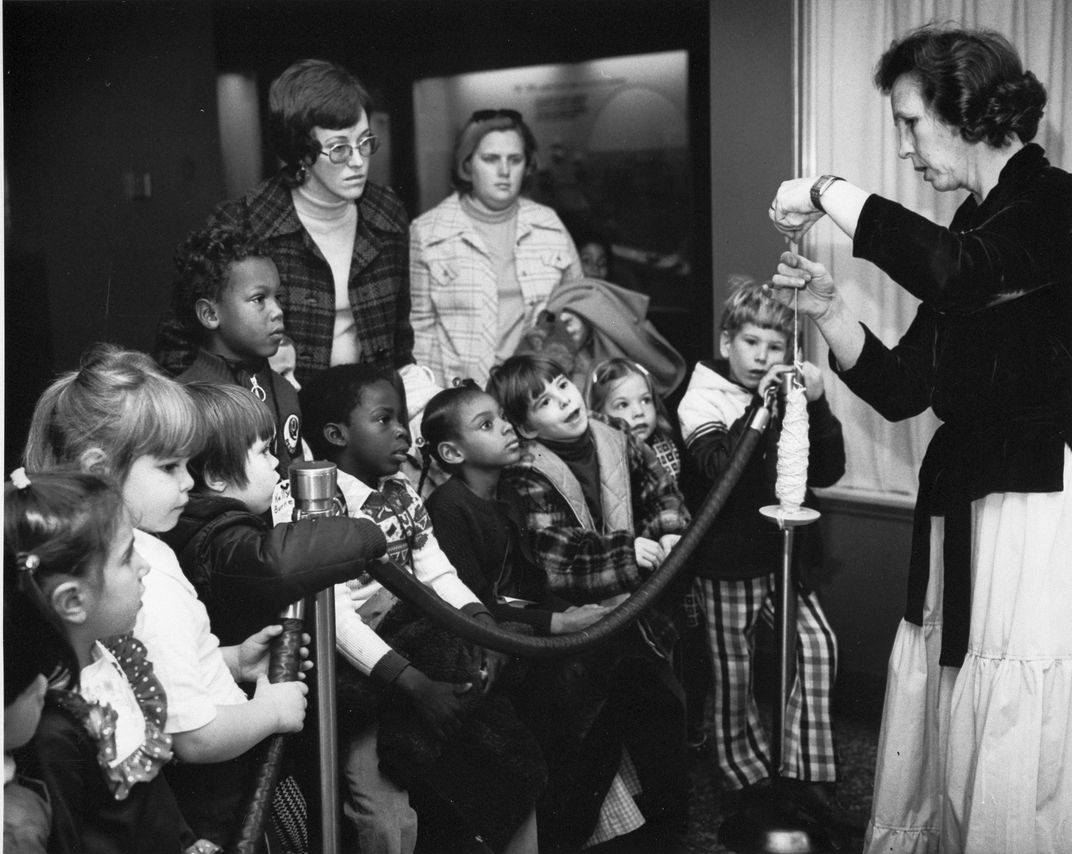The Smithsonian’s Evolving Role as the Nation’s Knowledge Partner
Museum education has had a long, ever evolving history at the Smithsonian that can be found at the heart of its mission today.
Museum education has had a long, ever evolving history at the Smithsonian that can be found at the heart of its mission today.
“Increase and Diffusion of Knowledge” has made education a central part of the Smithsonian’s work since its founding. When the first U.S. National Museum building opened next to the Smithsonian Castle in 1881, Secretary Spencer Baird and Director G. Brown Goode saw it as more than a “cemetery for bric-a-brac,” but rather as a “nursery of living thoughts.” The museum would have three purposes: a museum of record, a museum of research, and a museum of education. The ground level doors on four sides opened to whoever wished to enter, no climbing marble steps to a palace. As a museum for a democracy, the Smithsonian would not limit or charge for admission – its treasures were there to share with all. Baird and Goode believed in the power of objects to stimulate curiosity and an interest in learning. But the displays had to be educational, in arrangement and the instructive labels provided. The museum should be “a house full of ideas.”

In the ensuing years, education at the Smithsonian has become far more sophisticated, with new ways of displaying rows of objects and with learning tools built in. Handouts were available at the entrances to halls. The Smithsonian also began to reach a wider audience beyond its visitors, sending “school sets” of rocks and minerals, marine shells, and other educational collections to schools around the globe. Teacher’s guides accompanied publications, and staff gave illustrated lectures on key topics. A publication program allowed researchers to share their new knowledge with colleagues but also the general public.
In the 20th century, museum staff began to host education programs with school classes, stimulating interest in object-based learning. Educational programs were aired on the radio and later on television. A traveling exhibition program brought objects and displays across the country, with curriculum units an essential piece of the project. In the summertime, the Smithsonian hosted teacher training programs and then began sending workshops out to school districts across the nation.

And then in the mid-1990s a new pathway opened to the Smithsonian’s riches – the development of digital technology and the internet – and we began preparing online resources for teachers, students, parents, and the curious. Scanning of objects was accompanied by detailed information and learning materials to guide their study. Soon oral history interviews shared voices from the past to guide the children of today.
In 2020, under the leadership of Secretary Lonnie G. Bunch III, the Smithsonian Institution is embracing its identity as an educational institution like never before and delivering on its public service role through education. The strategic plan guides the institution towards an aspiration for greater reach, greater relevance, and profound impact. The goal to reach audiences beyond the walls of museums and centers became an urgent priority as the pandemic of COVID-19 challenged the nation’s educational systems. The Smithsonian education community’s collaborative and entrepreneurial spirit led to the institution taking a learner-centered approach to support the nation’s distance learning needs. The pandemic has highlighted and exacerbated access and equity issues in many sectors of society, including education. But it also highlighted new opportunities for educators to lean into. These opportunities include a reimagination of how education is defined and discussed and how educational resources are disseminated from the Smithsonian. It has also necessitated the increase in visibility of educators and a recognition of their expertise to help audiences make meaningful connections with the content at the institution.

From high tech to high touch, Smithsonian educators continue to expand the breadth of educational resources to cater to the learning needs and trajectories for learners of all ages and backgrounds. With a 175 year legacy as a trusted source for knowledge, the Smithsonian Institution steps boldly into the role of being the nation’s knowledge partner. This new phase in the organization’s evolution has created opportunities to evolve the educator’s role as a connector, convenor, and leader. The lessons of the past encoded in museum collections and the research on contemporary topics of global relevance at the Smithsonian serve as powerful tools to help educators inspire, engage, and empower audiences to make better decisions for the future. The Smithsonian Institution fosters the human capacity for change by fueling the human capacity to learn.

